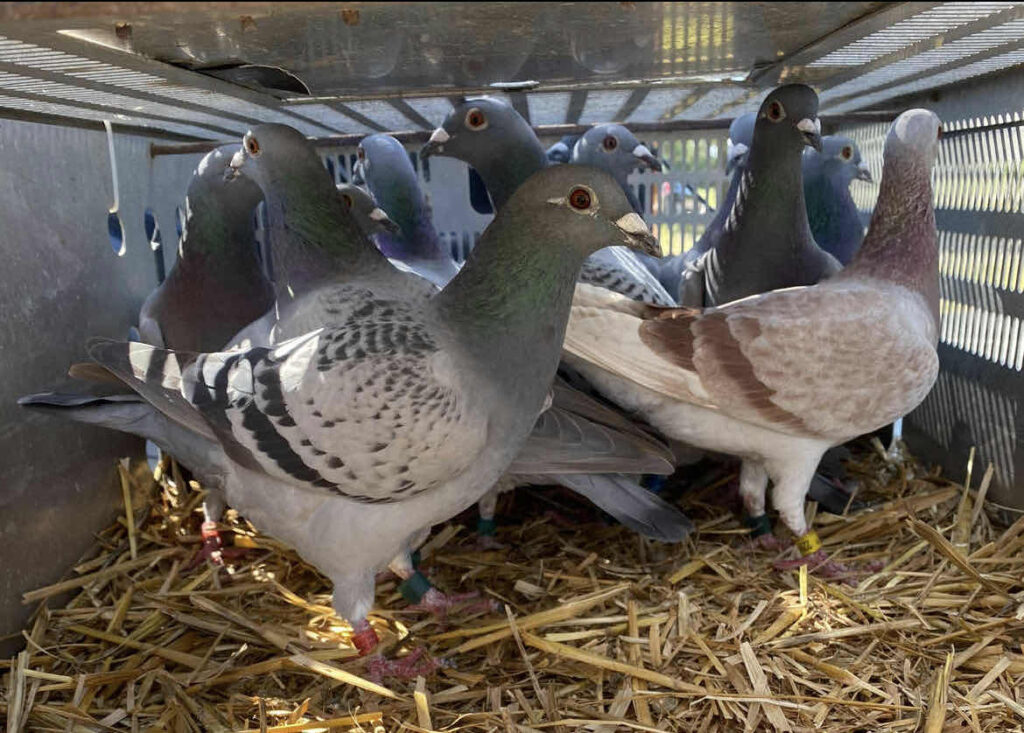
By Gage Johnson
McLaughlin Lofts has recently finished construction of its newest loft in Clearwater. The loft, a pigeon housing and training structure, marks an expansion from their original location in Hanson, Massachusetts.
This expansion from the company’s Massachusetts base comes as the centuries-old sport faces questions of how the legacy of pigeon racing will be passed to future generations.
McLaughlin Lofts is owned by the McLaughlin family and primarily managed by 63-year-old Frank McLaughlin, a prominent pigeon fancier, which is the term used for people who breed and race pigeons.
According to McLaughlin, his love of pigeons began at eight years old, when he attended a county fair with his father to buy more chickens for their backyard coop. Instead, he found two fan-tailed pigeons, a decorative breed called a “fancy pigeon,” for sale. The two fancy pigeons would then reproduce and take over the former chicken coop.
“We gave away the chickens and brought in the pigeons, and 54 years later I’m still doing it,” McLaughlin said.
Once the pigeons started overrunning the coop, McLaughlin attempted to release a few of them to create more space. This would introduce him to the concept of homing.
“I let these fancy birds out, maybe four or five, and they went from house to house, rooftop to rooftop, and after an hour or so they landed in my yard,” McLaughlin said. “I opened the door to my chicken coop, and they all marched back in.”
Homing is the ability of pigeons to find their way back to their homes, no matter the distance. Unlike migratory birds, pigeons seek a stable home where they can mate and raise their young, making homing a vital skill for survival when predators displace them.
Pigeon racing as a sport takes advantage of homing by accustoming many birds to a specific location, tagging them, and then releasing them up to 1000 miles away.
Fanciers wait back at the home location for the birds, with the fastest bird or those arriving within the first group of times winning the prize.
McLaughlin rose quickly in the world of pigeon racing, winning his first major race at 16 years old and being labeled “one of the best fanciers in America” by 18. His success was rare for someone so young in a sport dominated by older men, many of them in their 30s and beyond.
While pigeon racing was popular in the 20th century, the sport has been on the decline entering the 21st century. Many well-known fanciers are simply getting too old to continue competing in the sport they love, and many are leaving it without an heir.
His son Landon McLaughlin, a 19-year-old junior at the University of South Florida St. Petersburg, expressed his thoughts on the future of the sport.
“[Pigeon racing] is dying,” Landon McLaughlin said. “It’s always been dying. My dad is one of the younger fanciers at most events, and he’s almost 65.”
Pigeon racing is as much a tradition as it is a sport to fancier, with many fanciers intending to pass down their large lofts and numerous pigeons that they own to their children. Often, many fanciers get into their sport only because of their fathers and grandfathers.
“The sons now, they want to live their lives,” Landon McLaughlin said. “They don’t want to inherit their father’s pigeon lofts in Ohio.”
Landon McLaughlin said he has much respect for his father’s career and his ability to turn his passion into a profession, but he had no interest in taking up the mantle of managing McLaughlin Lofts.
“I can’t inherit that,” Landon McLaughlin said. “I won’t inherit that. I’d immediately start the selling process.”
Alexis Sandrink, a 19-year-old sophomore at USFSP, also shares familial ties to pigeon racing. Alexis Sandrik shared how her grandfather, Al Sandrik Sr., was involved in New Jersey’s pigeon racing scene, where he handled the gambling statistics for the races as an oddsmaker.
However, Al Sandrik Sr. could not pass on his love of pigeons to his son, Al Sandrik Jr. While he had invested in the pigeon business, it only drove a wedge between them, they said.
“[My father] hates pigeons because my grandfather made him take care of them,” Alexis Sandrik said.
Pigeon racing has also drawn growing criticism from animal rights groups, who cite concerns about the safety of the birds and mortality rates that can reach 60% in some races.
Cynthia Bardouka-Large, who is located in San Francisco, is the co-director of Palomacy, a nonprofit foster-based rescue that provides homes for domestic pigeons and advocates for their adoption.
Bardouka-Large, as co-director of Palomacy, is responsible for “saving the fallout” of pigeon racing, as many of the losing birds don’t make it home and end up stranded in the streets injured.
While Palomacy as an organization focuses mainly on rehoming pigeons and doves and providing them with the care they need, Bardouka-Large remains staunchly opposed to pigeon racing.
“To me that’s like dumping any domestic animal and expecting them to get home.” Bardouka-Large said. “I mean a dog will try to find its way home, but nobody would advocate people doing that.”
While doubts about pigeon racing’s future continue to grow, Frank McLaughlin said he hasn’t lost hope.
As technology advances, it brings new opportunities to the sport of pigeon racing. These technological advancements have the potential to bring a new interest in the sport, and inspire new generations to take it up.
“They’re very close to being able to watch these pigeon races in real time,” Frank McLaughlin said. “Where the birds will wear a chip, and you’ll be able to get on your computer and watch the race.”
Frank McLaughlin also brings up a new form of racing called one-loft racing, where pigeon fanciers send their pigeons over to be trained and homed inside of someone else’s loft, eliminating some costs associated with the sport.
Despite the challenges facing pigeon racing, fanciers like Frank McLaughlin remain optimistic that new technology and younger enthusiasts could keep the sport alive for generations to come.



